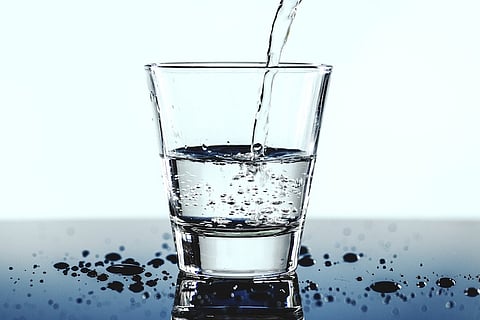

Reverse Osmosis water purifiers, commonly called RO water purifiers, have become common household appliances as they are the most popular choice to treat drinking water. However, a former Director of the Council of Scientific and Industrial Research (CSIR)’s National Environmental Engineering Research Institute (NEERI) claimed that RO water purifiers should be avoided and water should be drunk directly from the tap. In India, where tap water is not without impurities, the expert’s statement has thrown open a debate on whether the water we are drinking from the purifiers at home is ‘over-purified.’
Healthy vs unhealthy water
Reverse Osmosis (RO) is a water treatment process that removes contaminants from water by using pressure to force molecules through a semipermeable membrane. A report by the International Water Association, a body of water experts, states that reverse osmosis generally removes salt, manganese, iron, fluoride, lead and calcium during purification.
Earlier this year, a report - written jointly by NEERI, the Central Pollution Control Board (CPCB) and IIT-Delhi, and submitted to the National Green Tribunal - spoke of the amount of the total dissolved solids (TDS) present in drinking water purified by RO systems. TDS could be inorganic salts and small amounts of organic matter present in solution in water.
Though a study by the World Health Organisation states that the levels of TDS below 300 milligrams per litre in water are considered to be excellent, the committee’s report stated that if the TDS is less than 500 milligrams per litre, the RO system will not be useful and instead will end up removing important minerals. The report added that not only will the water not contain the necessary minerals required by the human body, the amount of water that will be wasted in the process of purification also will be large.
Is tap water in India safe to be consumed directly?
Priyanka Jamwal, a fellow at the Ashoka Trust for Research in Ecology and the Environment (ATREE), tells TNM that most Indians depend on borewells for their drinking water and the water present in the borewells usually contains several disease-causing impurities.
“I think the statement that we should drink tap water over RO water is relevant in developed countries like the US, where the tap water is as good as purified water and is free from contaminants. If we look at any report on the quality of water that India gets, we can see incidents where E.coli (a bacteria that can be harmful) and other such pathogens have been detected. When you have too many contaminants in such cases, it is better to drink RO water than tap water,” Priyanka says.
She adds that people can depend on the food they consume for their mineral requirements.
“We should not solely depend on water for our mineral needs. The health benefits of drinking RO water are more than the drawbacks. Yes, RO water removes negligible amounts of calcium from the water but also removes harmful nitrates along with it and we are preventing diseases when we use RO or other water purifiers. Only when the tap water we are supplied is as good as this purified water, should we think about drinking tap water directly,” Priyanka says.
The ‘reject water’ of RO purifiers
In addition to shedding light on the impurities and minerals present in RO water, the joint committee’s report to the National Green Tribunal (NGT) also pointed out that the RO purifiers also waste almost double the water that they actually purify as ‘reject water’.
“For every glass of water that it purifies, two glasses of water is wasted as reject water, which is almost 200 per cent,” Priyanka says.
The NGT, too, has taken cognisance of the waste-water released by the RO purifiers. Based on the joint committee’s report, the NGT, in May, directed the Centre to make sure that consumers are informed not only about the water source and the quality of water that the RO purifiers supply but also what to do with the water that is released as waste.
“Wherever RO use is to be permitted, recovery of water to the level of more than 60% should be ensured and the star rating of the systems be made mandatory. Recovery be enhanced to 75 per cent,” the NGT order stated.
What consumers can do with reject water
At a time when several cities in India are either facing a water crisis or are on the brink of one, it is important that every drop of water be saved or re-used.
Mangala Iyer, a resident in Pune, tells TNM that her locality re-uses the reject water. “We usually use this reject water to wash our hands, wash utensils, clean the balcony and even water the plants,” she shares.
The reject water may not be safe for human consumption but it is quite safe to water the plants, Priyanka adds.
“Plants can tolerate TDS up to 2,500 mg per litre, which is quite high. Hence, the reject water can definitely be used for irrigation because it will not have that high a TDS. We should use the water for all non-potable uses, like watering plants, mopping, washing or even filling flush tanks with it,” Priyanka says.
Both Priyanka and Mangala Iyer feel that till RO purifier companies manage to reduce the amount of reject water that is released, they must include recommendations for re-use on their packaging. “They should also tell consumers to reuse this water during the demos they give when they come to fit the systems,” Mangala Iyer says.